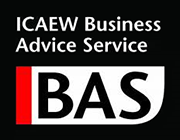Updated: 8th January 2020
Acquisitions: The Opportunities and The Risks
On the face of it, acquisitions make good business sense. An acquisition of an established company allows for a pooling of resources, a reduction in costs, access to a new customer base, and improvements to overall operational efficiency.
Indeed, harnessing the power of an established company has proven to be an important means of growth for many companies leading to rapid expansion and an increase in market share and/or the removal of barriers to entry to new markets or territories.
Opportunity abounds
For a company looking to dominate their market, acquiring a rival is an effective way of increasing market share while simultaneously reducing competition.
For those looking to diversify, acquiring a company in a different, but perhaps complimentary field, represents a less risky proposition than entering a new market blindly where achieving market penetration can be a lengthy and costly process with no guarantee of success.
With both parties keen to ensure a good deal with favourable anticipated shareholder returns, acquisitions can be fraught with difficulties. Here we look at how these transactions affect both buyer and seller.
What does an acquisition mean for the acquired company?
It goes without saying that the main motivation behind entertaining an acquisition approach from a rival is the prospect of generating a healthy return for shareholders.
A premium to cover goodwill often results in the company being sold for an amount significantly above its day close market value, something which is clearly appealing to shareholders.
In regards to the company’s future prospects, it is likely that the acquiring company, keen to ensure the acquisition is successful, will assist when it comes to allocating additional resources such as staff and an increase in marketing spend and activities. This could propel the company forward much faster than it would have been able to do on its own over the same time period.
What does this type of deal mean for the acquisitive company?
For the acquisitive company the potential benefits are numerous. Acquiring a direct rival means an increase in market share, an expanded customer base, a greater presence and coverage on the high street and/or online, as well as reduced competition.
Purchasing a company operating within a different field is often a time efficient and less risky way of entering a new market or growing market share. It allows the acquiring company to instantly expand their reach and move into a new market bolstered by the advantages that come with a company already established in that particular marketplace.
These include having a known brand and trusted reputation, as well as knowledgeable and experienced employees who not only know the market but also know how to be successful within it.
Depending on the industry, these key employees are also likely to have valuable contacts, something which is highly prized in certain industries such as professional services where referrals are a big source of lead and work generation.
However, acquiring an existing company may also mean inheriting aspects of the business which are not quite as desirable whether this is outstanding debt, non-performing retail locations, overstaffing issues, or an overly complex organisational and operating structure.
As every acquisition is different, the level of value added to the acquiring company is questionable and varies wildly. While some transactions translate into an almost immediate boost to shareholder value, some acquisitions, particularly those which are hostile in nature, lead to costs escalating far above initial projections. This means it may take much longer for shareholders to see increased value than originally expected.
Even after the transaction has completed, there are still hurdles to tackle if the acquisition is to become a success. The loss of staff or customers who may not be happy with the change of ownership is always a risk, something which was present during Kraft’s acquisition of Cadbury in 2009.





